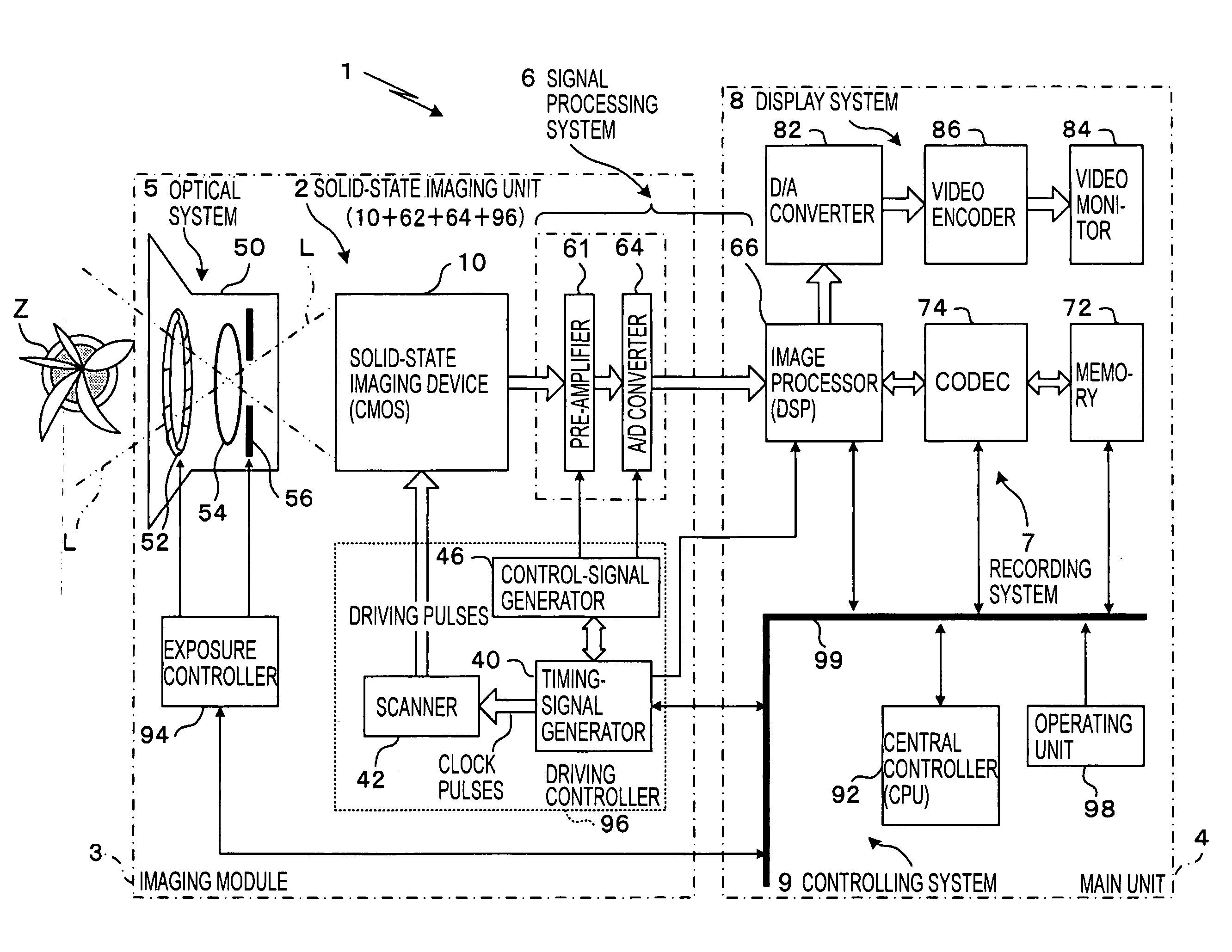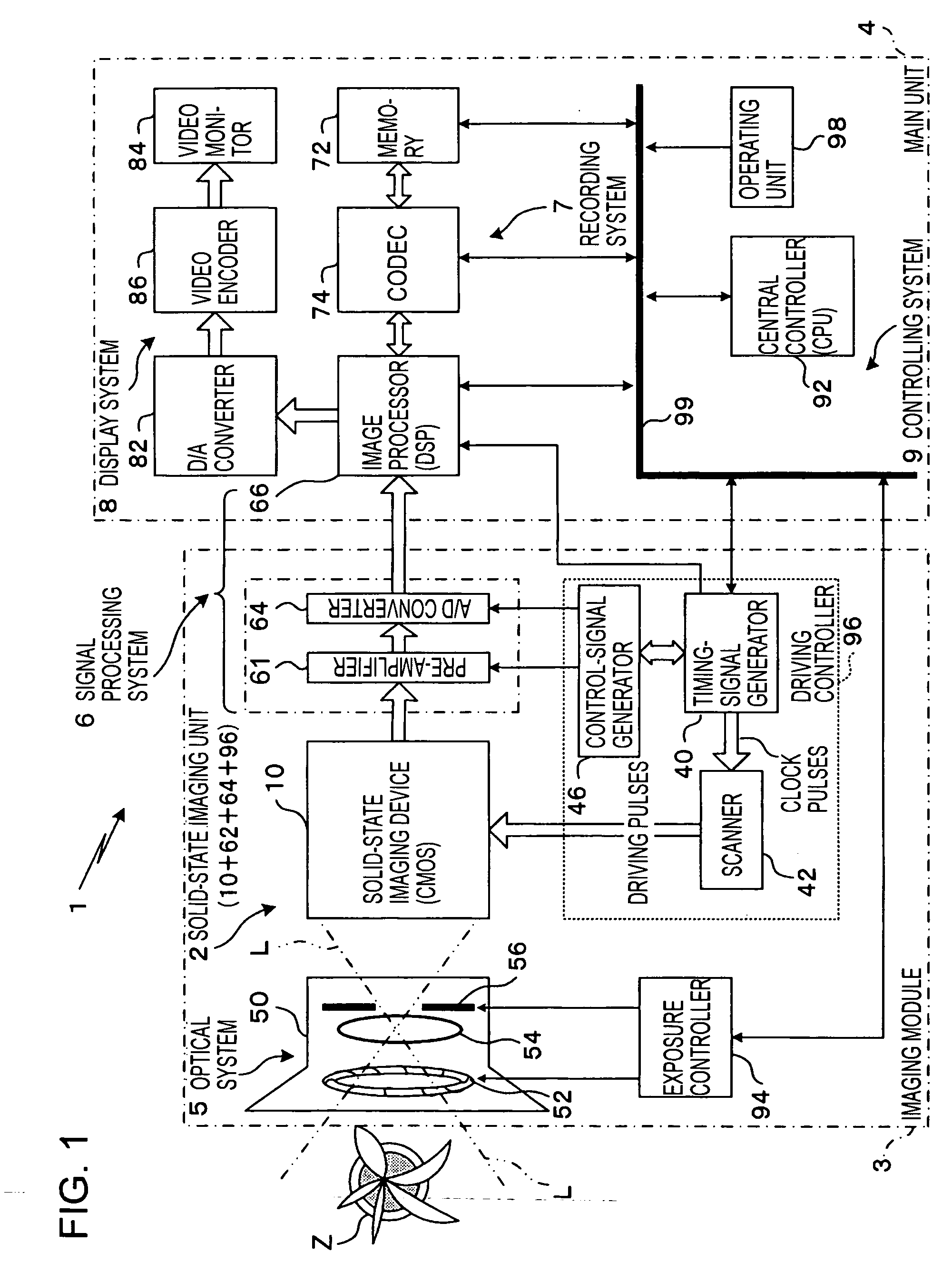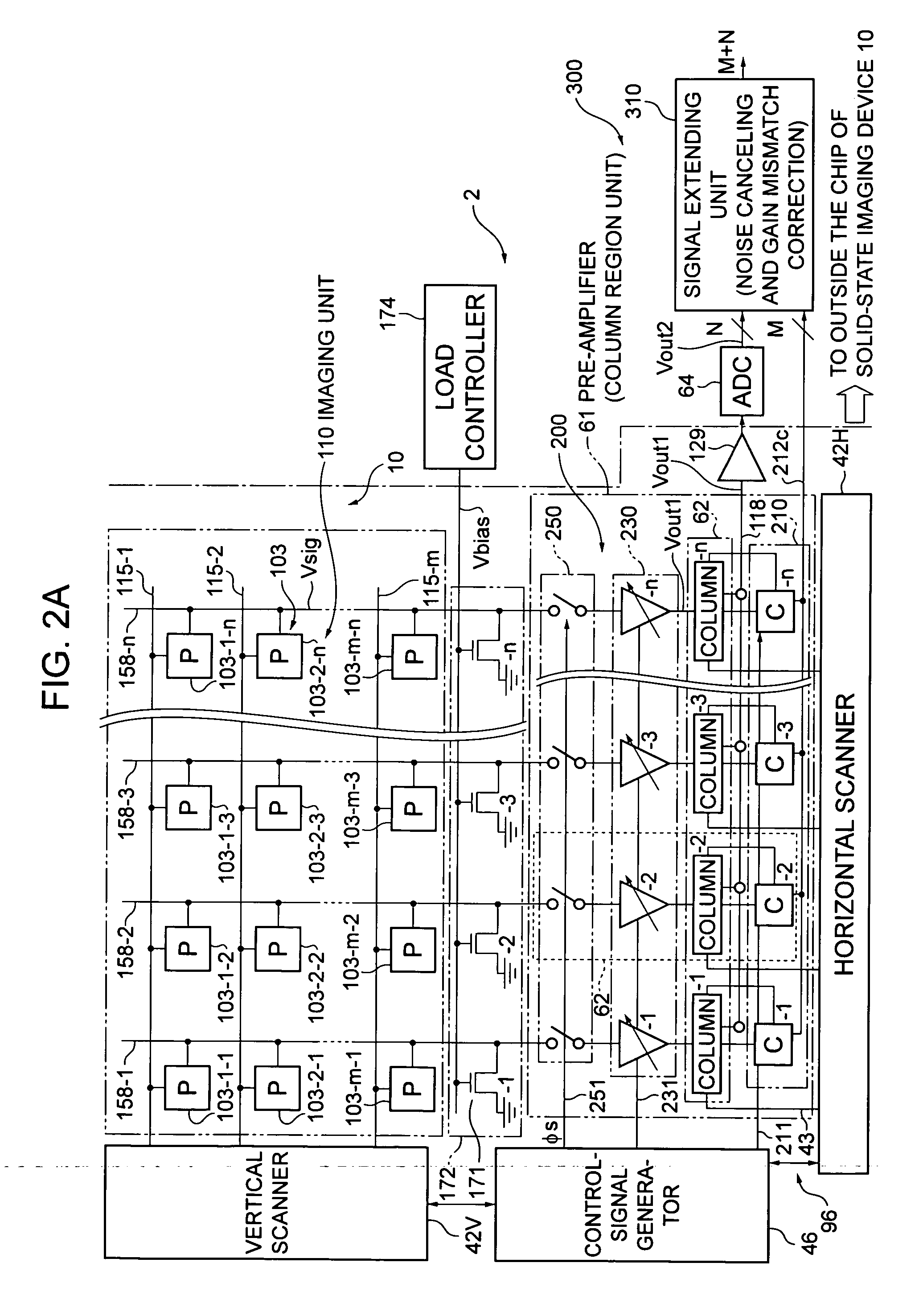Method of controlling semiconductor device, signal processing method, semicondcutor device, and electronic apparatus
a semiconductor device and semiconductor technology, applied in the direction of radiation controlled devices, still video cameras, television systems, etc., can solve the problems of increasing the number of pixels and increasing the speed of imaging, affecting the dynamic range of the image, and affecting the image quality. , to achieve the effect of preventing the setting of a gain exceeding the dynamic range, extending the dynamic range, and favorable s/n ratio
- Summary
- Abstract
- Description
- Claims
- Application Information
AI Technical Summary
Benefits of technology
Problems solved by technology
Method used
Image
Examples
first and second embodiments
[0088]FIGS. 2A and 3 are schematic diagrams showing the solid-state imaging unit 2 mainly composed of the CMOS solid-state imaging device 10, and peripheral parts thereof, according to first and second embodiments of the present invention. In the embodiments shown in FIGS. 2A and 3, the solid-state imaging device 10 is composed mainly of the imaging unit 110 and the pre-amplifier 61, and the A / D converter 64 is provided externally to the solid-state imaging device 10.
[0089] The solid-state imaging device 10 is implemented by forming the imaging unit 110 and the pre-amplifier 61 on a common semiconductor substrate. Furthermore, the A / D converter 64 and a signal extending unit 310 may be formed on the same chip, in regions where column regions of the solid-state imaging device 10 are not formed. In that case, the solid-state imaging unit 2 is substantially coincides with the solid-state imaging device 10.
[0090] The solid-state imaging unit 2 includes an imaging unit (a photoelectric...
second embodiment
First Example of Operation Timing and Detecting Circuit, Which Relates to the Second Embodiment
[0140]FIG. 4 is a timing chart showing operation timing in one horizontal period of the solid-state imaging unit 2 according to the second embodiment shown in FIG. 3. FIG. 5 is diagram showing an example construction of a pixel-signal detector 210 in the second embodiment shown in FIG. 3.
[0141] As shown in FIG. 5, the pixel-signal detector 210 in the second embodiment includes a pixel-signal-level detector 213 and a classification-signal generator 224. The pixel-signal-level detector 213 detects the level of a pixel signal Vsig output through a vertical signal line 158 of the imaging unit 110, and compares the level with predetermined threshold values. The classification-signal generator 224 generates a classification signal Vsepa for classifying the level of the pixel signal Vsig based on a result of detection by the pixel-signal-level detector 213.
[0142] The pixel-signal-level detector...
first embodiment
Second Example of Operation Timing and Detecting Circuit, Which Relates to the First Embodiment
[0168]FIG. 7 is a timing chart showing operation timing during a horizontal period of the solid-state imaging unit2 according to the first embodiment shown in FIG. 2A. FIG. 8 is a diagram showing an example construction of the pixel-signal detector 210 in the first embodiment shown in FIG. 2A.
[0169] Next, the operation of the pixel-signal detector 210 in the first embodiment will be described using specific examples of numeric values. For example, in an arrangement according to the first embodiment in which the signal voltage Vout is compared with predetermined reference voltages on the output side of the pixel-signal amplifier 230, when gain setting is controlled by three levels of ×2, ×4, and ×8 based on powers of 2, the reference voltages are 500 mV, 250 mV, and 125 mV. In order to perform comparisons with these reference voltages, the pixel-signal detector 210 receives comparison volt...
PUM
 Login to View More
Login to View More Abstract
Description
Claims
Application Information
 Login to View More
Login to View More - R&D
- Intellectual Property
- Life Sciences
- Materials
- Tech Scout
- Unparalleled Data Quality
- Higher Quality Content
- 60% Fewer Hallucinations
Browse by: Latest US Patents, China's latest patents, Technical Efficacy Thesaurus, Application Domain, Technology Topic, Popular Technical Reports.
© 2025 PatSnap. All rights reserved.Legal|Privacy policy|Modern Slavery Act Transparency Statement|Sitemap|About US| Contact US: help@patsnap.com



